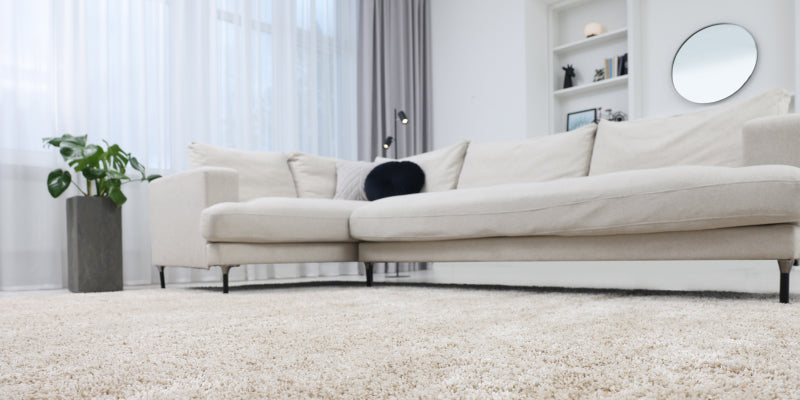
How is Carpet Made?
|
|
Time to read 3 min
|
|
Time to read 3 min
Carpet feels like fabric, but most of the carpets on the market today are made from synthetic polymers. In fact, more than half consists of nylon, which is made from plastic. Some of the milk jugs and soft drink containers you recycle wind up being reborn as carpeting. Other plastic materials used are acrylics, polyester and polypropylene, which is also called olefin. Only a small percentage – less than 3% – of very expensive carpeting is made of woven wool. Woven wools have the advantage of aging gracefully and cleaning well, but they can’t stand up to traffic and moisture like a synthetic.
To make the carpeting, the textile materials are formed into pile yarns that are dyed and sewn to a primary backing and then glued to a secondary backing that adds strength and stability to the carpet and separate layer of padding. Woven or non-woven polypropylene is most often used to make both layers of backing, although a small percentage of carpet backing is made with jute, a natural fiber woven into coarse fabric. Synthetic rubber latex is the glue that binds the layers together.
Most carpet padding is made of rebond, a recycled scrap urethane that is chopped and pressed into layers. A thin layer of plastic is bonded to the top to hold the pieces together and give the padding a smooth, uniform surface.
The process of carpet manufacturing has several steps. First, the yarns are tufted, which is the process of weaving the fibers into the primary backing. A tufting machine has 12-foot long rollers and up to 12,000 needles that pull the yarn through the weave of the backing much in the same way a sewing machine would. A small hook grabs each stitch of yarn to create a loop. In carpet lingo, this is called loop pile construction, for obvious reasons. Photoelectric sensors programmed to produce a specific pile height control the size of the loop. Higher pile makes shaggier carpet. In the ‘70s, shag pile was all the rage, but most of the carpet on the market today is low profile pile with uncut loops, which stands up to traffic much better because no cut ends are exposed. It’s easier to clean and less likely to fray or separate from the backing.
Depending on the carpet style under construction, the loops may be cut in the next step. Cutting the loops makes for a fluffier carpet that your toes sink into. Cut and loop construction is used to make variations in the cutting process, forming dimensional patterns by cutting some loops and leaving others uncut.
The yarn might be dyed before or after tufting. Dyeing the yard after tufting allows more consistency, greater control and more options. There are several basic methods of dying the tufted carpet:
After the carpet is dyed or the design is screened or transferred, the carpet is steamed to set the colors, rinsed of excess dye and dried.
After the carpet is tufted and dyed, it is bonded to a backing material. The ends of the carpet are sewn together to make a bolt length, like the rolls you see in flooring stores. The carpet is loaded into a machine that coats the underside of the carpet and the secondary backing material with latex adhesive. After both pieces are coated, they are pulled into a marriage roller. The pressure of the tightly wound material on the adhesive layers permanently bonds the backing to the carpet. To finish the job and ensure the bond, the carpet is heated in an oven.
Before shipping, the carpet is steamed, brushed, vacuumed, and then run though a machine that shaves any uneven tufts, leaving the surface smooth and uniform. The finished carpet is finally ready for delivery to the manufacturer’s warehouse or a retail outlet. And that’s how carpet is made.